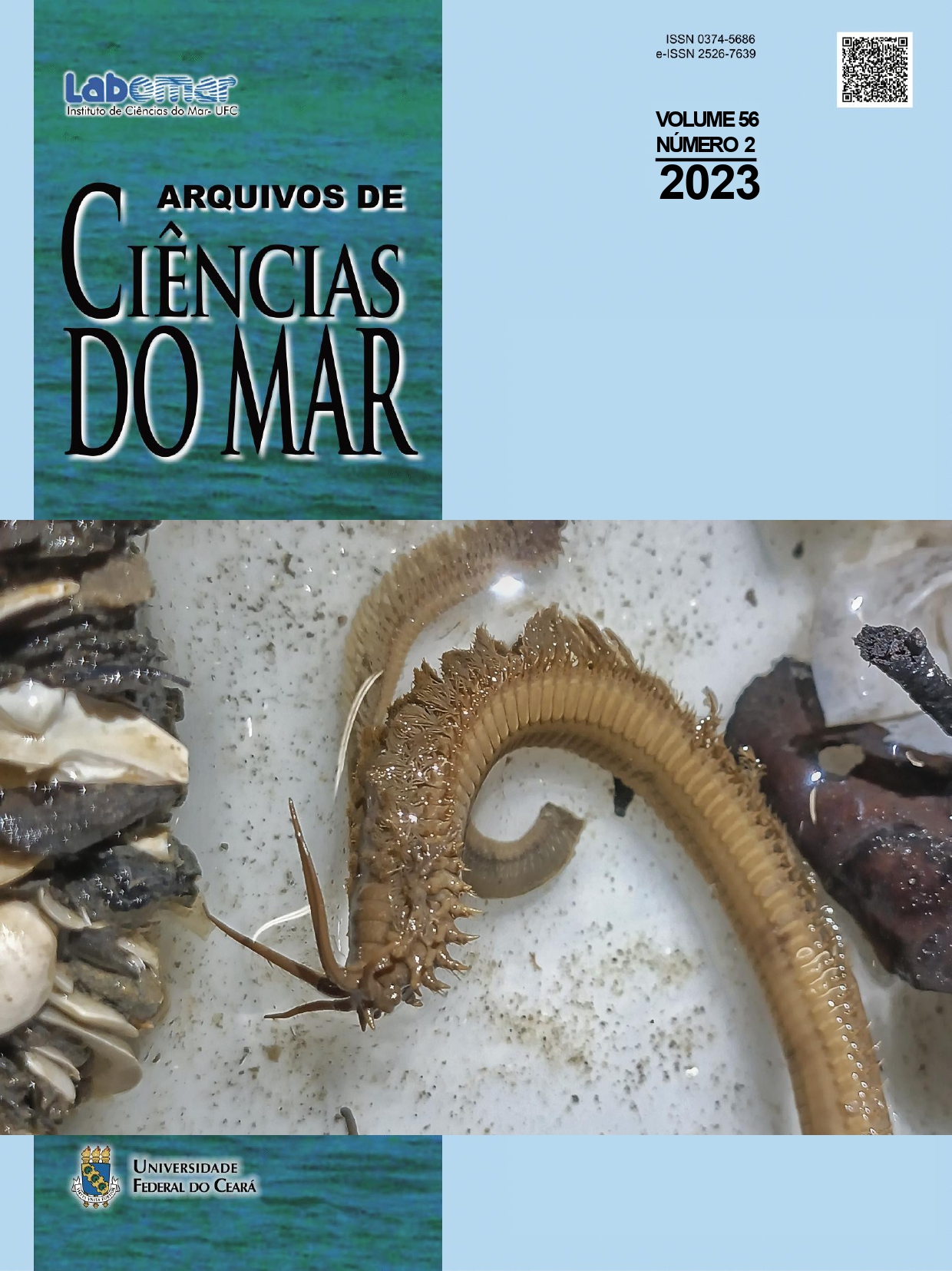BIOMETRIC AND REPRODUCTIVE INDICATORS IN Perna perna (Linnaeus, 1758) MUSSELS FROM COASTAL MARICULTURE IN RIO DE JANEIRO, BRAZIL
Indicadores biométricos e reprodutivos em mexilhões Perna perna (Linnaeus, 1758) de mariculturas costeiras no Rio de Janeiro, Brasil
DOI:
https://doi.org/10.32360/acmar.v56i2.71941Resumo
The aim of this study was to analyze biometric and reproductive mussel indicators (Perna perna) from coastal maricultures in Rio de Janeiro, Brazil. The collections were carried out with a total of 480 animals in the four seasons of the year (autumn, winter, spring and summer), from March 2019 to February 2020. Two mussel samples were collected each season (n = 60) with average measurements of 23.9 mm for width, 33.8 mm for height, 69.9 mm for length, and 28.3 g for weight (shell + soft parts) in both coastal regions. Samples from Forno beach exhibited higher homogeneity in the winter for all evaluated parameters (width, height, length and weight). Mussel weight was the most variable parameter due to factors such as water flow, nutrients, and gonadal maturation stage. Regarding reproductive parameters, a predominance of females was observed at both beaches throughout all four seasons. Additionally, a predominance of both males and females at substage IIIA was observed during autumn and winter, while substage IIIC showed the highest presence in spring and summer.
Keywords: Bivalve Mollusk; Growth indicators; Marine Biology; Reproduction
Downloads
Publicado
Edição
Seção
Licença
Copyright (c) 2023 Arquivos de Ciências do Mar

Este trabalho está licenciado sob uma licença Creative Commons Attribution 4.0 International License.
1. Proposta de Política para Periódicos de Acesso Livre
Autores que publicam nesta revista concordam com os seguintes termos:
- Autores mantém os direitos autorais e concedem à revista o direito de primeira publicação, com o trabalho simultaneamente licenciado sob a Licença Creative Commons Attribution que permite o compartilhamento do trabalho com reconhecimento da autoria e publicação inicial nesta revista.
- Autores têm autorização para assumir contratos adicionais separadamente, para distribuição não-exclusiva da versão do trabalho publicada nesta revista (ex.: publicar em repositório institucional ou como capítulo de livro), com reconhecimento de autoria e publicação inicial nesta revista.
- Autores têm permissão e são estimulados a publicar e distribuir seu trabalho online (ex.: em repositórios institucionais ou na sua página pessoal) a qualquer ponto antes ou durante o processo editorial, já que isso pode gerar alterações produtivas, bem como aumentar o impacto e a citação do trabalho publicado (Veja O Efeito do Acesso Livre).

